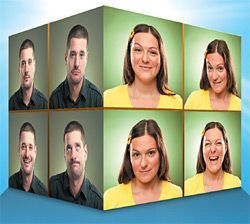Some doctors thrive in a personality-based clinic and have a loyal following no matter what services or equipment they offer, but for most chiropractic offices who are trying to grow and expand, new equipment purchases help us stay relevant and continue to service our client base in the best, most up-to-date manner possible. So, regarding equipment purchasing: should you lease, get a bank loan, or pay cash?
Healing From Within: The Power of You
A quiet revolution is gaining momentum in spine science: The biopsychosocial model is challenging the simplistic biomedical model. Instead of limiting the perspective of the clinician to an identifiable pathology, the biopyschosocial model emphasizes that one should consider "the patient's unique biologic, psychological, social, and economic milieu."1
Recent publications are taking things to a higher level. An article titled "The Power of Suggestion – A Wild Card Across Spine Care" states, "The power of suggestion – and corresponding patient/subject expectations regarding outcomes – can have major effects in spinal medicine and spinal research ... simply observing people, paying attention to them, or making them feel special can induce powerful effects."2 A paper by Michael and Garry3 suggests that suggestion and expectation may affect other well-known findings.
Scientists are also studying the relationship between emotions, brain connectivity, and pain. A study reported that where pain persisted, brain gray matter density decreased. The authors also noted, "Initially greater functional connectivity of nucleus accumbens with prefrontal cortex predicted pain persistence, implying that corticostriatal circuitry is causally involved in the transition from acute to chronic pain."4 And as reported in the U.K.'s The Telegraph, "The more emotionally the brain reacted to the initial injury, the more likely it was that pain [would] persist after the injury [had] healed."5

A frequent question asked by patients and practitioners is, "To what extent do intent, attitude and touch affect health outcomes?" Although these issues may seem unrelated to the technical aspects of health care, a growing body of evidence suggests that such factors may significantly affect the healing process. Attitude matters. Laughter and humor have been shown to have beneficial health effects as well.
CBS News6 reported on a paper in Aging7 that examined personality traits in people 95 years of age and older. The researchers reported that most had positive personality traits; the majority were outgoing, optimistic and easygoing. As noted by CBS News, "They considered laughter an important part of life and had a large social network. They expressed emotions openly rather than bottling them up." Other investigators have found that dispositional optimism protects older adults from strokes.8-9
Berk, et al.,10 investigated how humor-associated, mirthful laughter modulated certain neuroimmune parameters. Fifty-two healthy men participated in the study. Blood samples were taken 10 minutes before viewing an hour-long humor video. Additional blood samples were taken 30 minutes into the video, 30 minutes after the viewing was completed and 12 hours after the viewing. Increases were found in natural killer cell activity (immunoglobins G and M), with several immunoglobin effects lasting 12 hours after viewing the humor video.
Other effects lasting at least 12 hours were increases in leukocyte subsets and cytokine interferon gamma. The authors concluded, "Modulation of neuroimmune parameters during and following the humor-associated eustress [pleasant or curative stress] of laughter may provide beneficial health effects for wellness."
Finally, in a study by Kimata,11 allergy patients who watched a Charlie Chaplin comedy had their skin welts shrink, an effect not found in control subjects who watched weather reports.
Do these studies mean that practitioners should abandon our clinical procedures and become stand-up comics? Certainly not! However, realize that an upbeat, positive, empathic attitude will benefit your practice members more than a neutral or negative one. In a study by DiBlasi, et al.,12 the authors stated, "One relatively consistent finding is that physicians who adopt a warm, friendly, and reassuring manner are more effective than those who keep consultations formal and do not offer reassurance."
As chiropractors, we touch our patients and project an attitude that profoundly affects their well-being. We can do so by default or by design. My message to practitioners and patients alike is to focus on your intent to allow the body to express its potential. It may significantly affect clinical outcomes.
References
- Weiner BK. Spine update: the biopsychosocial model and spine care. Spine, 2008;15;33(2):219.
- "The Power of Suggestion - A Wild Card Across Spine Care." The Back Letter, 2012;27(8);96.
- Michael RB, Garry M. Suggestion, cognition, and behavior. Current Directions in Psychological Science, 2012;21(3):151.
- Balioki MN, Petre B, Torbey S, et al. Corticostriatal functional connectivity predicts transition to chronic back pain. Nature Neuroscience, 2012;15:1117.
- "Chronic Pain Is Determined by Emotions, Scientists Believe." The Telegraph (UK), July 1, 2012.
- Castillo M. "Researchers Discover Optimism May Lead to Longevity." CBS News, May 30, 2012.
- Kato K, Zweig R, Barzilai, Atzmon G. Positive attitude towards life and emotional expression as personality phenotypes for centenarians. Aging, 2012;4(5):359.
- "Smile a Lot; It Just Might Save Your Life." USA Today, Dec. 27, 2011.
- Kim ES, Park N, Peterson C. Dispositional optimism protects older adults from stroke. AHA Stroke; published online before print July 21, 2011.
- Berk LS, Felten DL, Tan SA, et al. Modulation of neuroimmune parameters during the eustress of humor-associated mirthful laughter. Alternative Therapies, 2001;7(2):62.
- Kimata H. "Effect of Humor on Allergen-Induced Wheal Reactions." (letter) Journal of the American Medical Association, 2001;285(6):738.
- DiBlasi Z, Harkness E, Ernst E, et al. Influence of context effects on health outcomes: a systematic review. The Lancet, 2001;357(9258):757.


